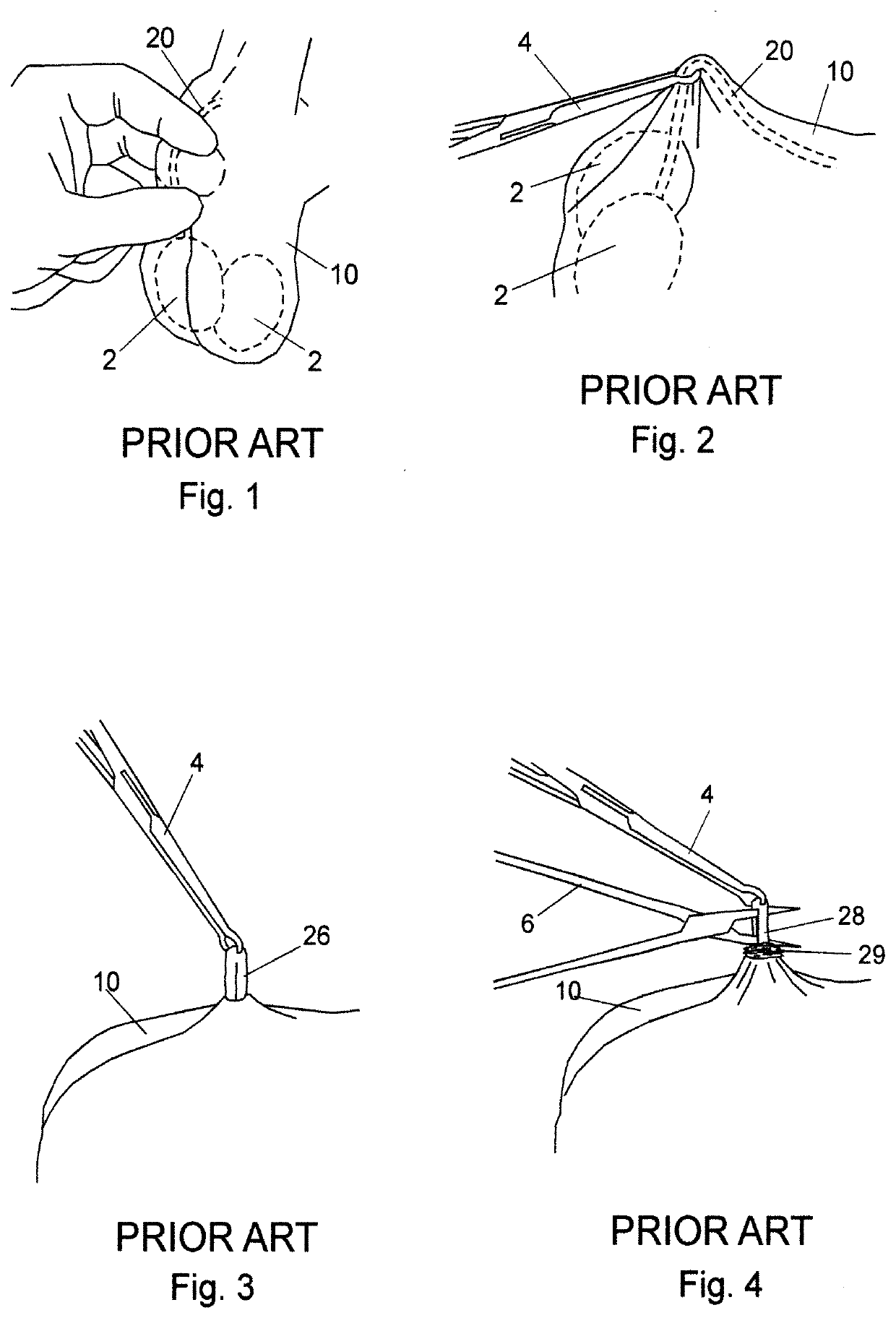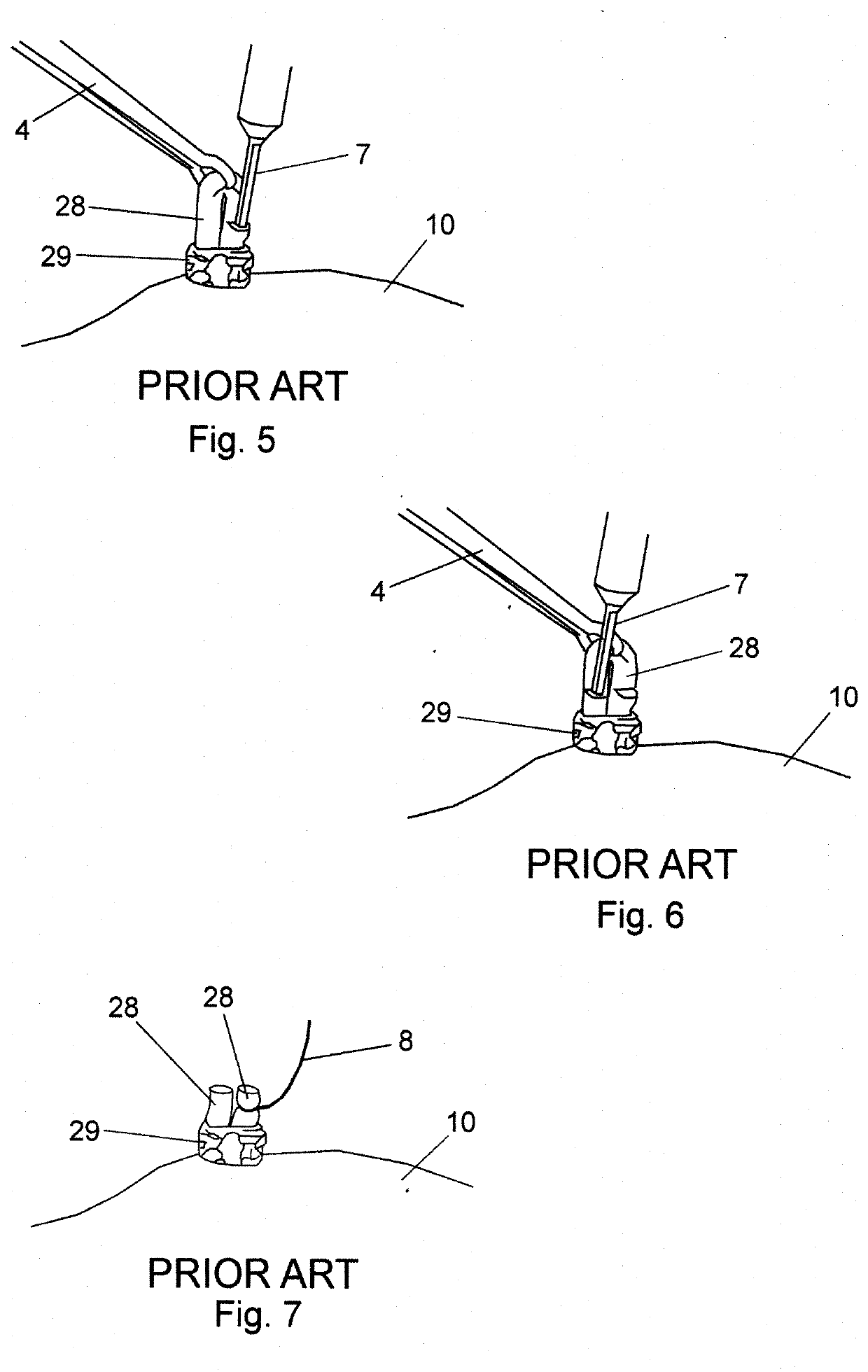Bipolar coagulating devices and vasectomy kits associated therewith
a technology of coagulation device and vasectomy kit, which is applied in the field of bipolar surgical instruments and kits, can solve the problems of significant swelling, significant surgical skill, and tremendously large hematoma
- Summary
- Abstract
- Description
- Claims
- Application Information
AI Technical Summary
Benefits of technology
Problems solved by technology
Method used
Image
Examples
examples
[0175]The most common method of vasectomy currently practiced is the No-Scalpel Vasectomy (“NSV”) in which the vas deferens is delivered from the scrotum via one or two openings formed by puncturing the scrotum and then expanding the opening(s). Steps of a typical prior-art NSV wherein a vas duct is occluded are depicted in FIGS. 1 through 10. In FIG. 1, a vas duct 20 is located in scrotum 10 using a standard technique. Thereafter, a local anesthetic is injected at the site. Duct 20 is then located in a fold of scrotum 10 using a ringed forceps 4 as shown in FIG. 2. The scrotum is then punctured using a dissecting forceps and the opening expanded sufficiently to allow the surgeon to deliver a portion 26 of vas duct 20 as depicted in FIG. 3. Dissecting forceps 6 are then used to puncture vas sheath 29 and then strip sheath 29 back to expose duct portion 28 as shown in FIG. 4. In FIGS. 5 and 6, duct portion 28 is hemi-dissected into abdominal and testicular portions, after which the d...
PUM
 Login to View More
Login to View More Abstract
Description
Claims
Application Information
 Login to View More
Login to View More - Generate Ideas
- Intellectual Property
- Life Sciences
- Materials
- Tech Scout
- Unparalleled Data Quality
- Higher Quality Content
- 60% Fewer Hallucinations
Browse by: Latest US Patents, China's latest patents, Technical Efficacy Thesaurus, Application Domain, Technology Topic, Popular Technical Reports.
© 2025 PatSnap. All rights reserved.Legal|Privacy policy|Modern Slavery Act Transparency Statement|Sitemap|About US| Contact US: help@patsnap.com



